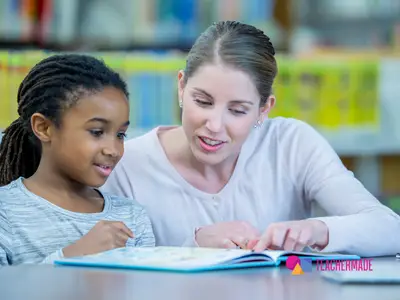Are you looking for the Classworks Special Education program from TouchMath? Click here to go to their site.
Are you looking for the Classworks Special Education program from TouchMath? Click here to go to their site.
Effective classroom teaching relies on educators being aware of the needs, achievements, and gaps in their students’ knowledge. Intervention, remediation, and acceleration are three tools teachers can use in their instruction when some students just aren’t getting it.

Student intervention is one of the more familiar ways that teachers offer formal support for struggling students. Intervention is effective when 15% or fewer learners struggle with a specific concept or skill. It focuses on a particular learning goal and offers frequent assessment and tracking.
There are two main ways to describe intervention: as a response to intervention (RTI) or as a multi-tiered system of support (MTSS).
Response to intervention refers to a three-stage approach that starts with a foundation of scientifically-supported and high-quality instruction. Then, as students respond to this instruction, additional support is offered on a group-by-group basis as needed. In the second phase, students who seem to be struggling with the material are given more rigorous instruction.
On the other hand, a multi-tiered support system focuses on implementing interventions. It emphasizes the role of instructors and other supportive adults in the learners’ environment. MTSS also relies on differentiation to increase the efficacy of instruction within the supportive environment.
Imagine a student who is struggling with a specific concept. You notice that they’re falling behind the class’s learning goals, so you offer a web-based unit that reviews and drills the skills associated with the current learning goal. This is just one example of intervention, which can look like many different approaches.
Intervention can be as simple as assigning some extra practice based on students’ needs or as complex as re-designing entire units to accommodate the pace and support of your students.
You’re probably already using intervention in your classroom. Every time you offer extra support to a struggling student or group of students, you use intervention. You should use intervention when you notice that some students are falling behind with certain concepts and skills. Your intervention should target these concepts and skills without branching outside current learning goals.
Remediation is a re-teaching of concepts and skills students struggle with in the classroom. It involves the teacher drilling previous knowledge with focused instruction on learning goals of lower grade levels. Usually, teachers offer remediation to the entire class when 80% or more of the students are struggling to achieve the current grade-level learning goals.
Formative assessment is a crucial part of remediation because formative assessment allows the teacher to know how, when, and how much remediation a student needs for a given concept or skill. If a teacher consistently assesses what skills and concepts are lacking in the class, they can offer more targeted and timely remediation support.
The most common example of remediation is re-teaching: simply repeating and re-doing the instruction to benefit learners who may have missed something the first time. Another effective example of remediation is task analysis: breaking down the task, skill, or concept into smaller components that could be easier for learners to grasp.
You should use remediation when most of the class struggles to grasp a concept or skill directly related to your current learning goal. Pause instruction, re-teach what students are missing, and only move forward once 80% or more of the class exhibits understanding and mastery.
Acceleration refers to stopping group instruction to quickly re-teach a previous foundational skill or concept. Then, the teacher briefly assesses whether the students have grasped what has been re-taught before moving on to current grade-level learning goals. Acceleration is an iterative approach, meaning the teacher will likely pause and repeat concepts several times throughout instruction.
Acceleration can be as simple as reviewing a simpler concept in the midst of teaching a more complex subject during a standard class hour. It can also look like specific instruction for acceleration that highlights review and formative assessment to get students up to grade level.
You should use acceleration when most of your students struggle with a concept. Then, as you re-visit concepts and formatively assess students’ understanding, ensure that at least 80% of students exhibit understanding and mastery of the foundational skill before moving on entirely from acceleration.
Triage gaps in learning and remediate students who need it most. With TeacherMade, you can collect data on struggling students in your class. From there, you can: